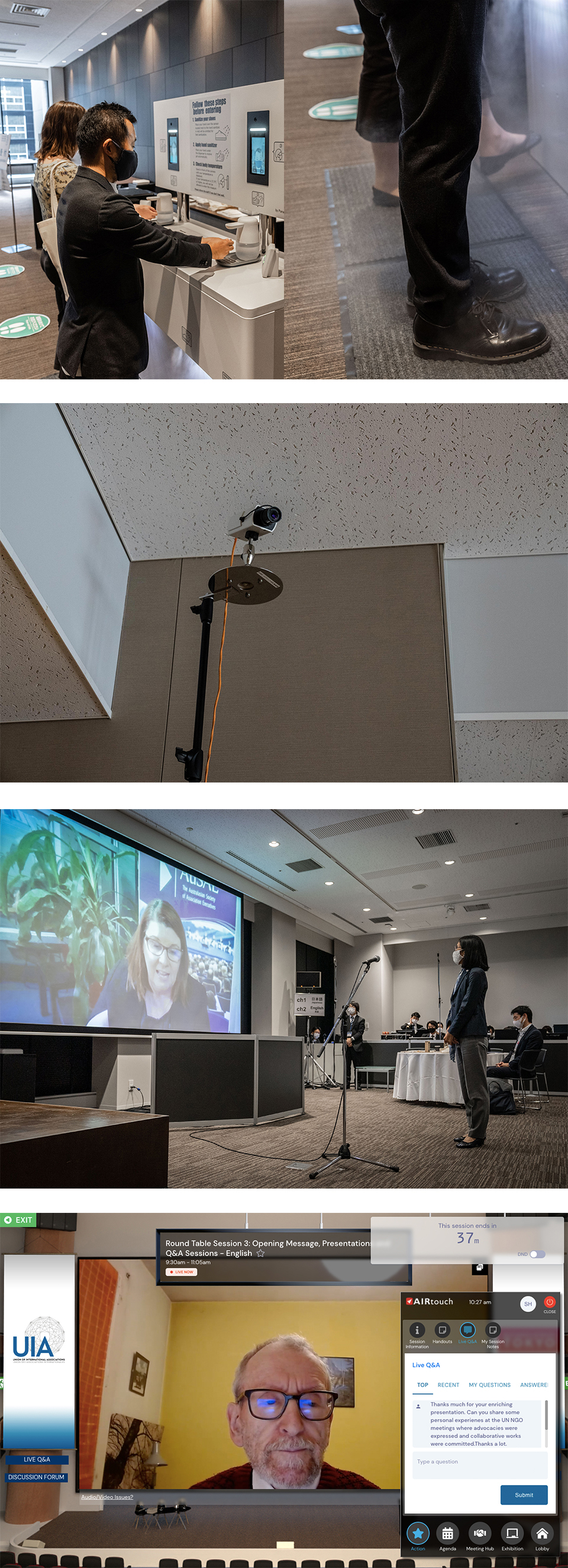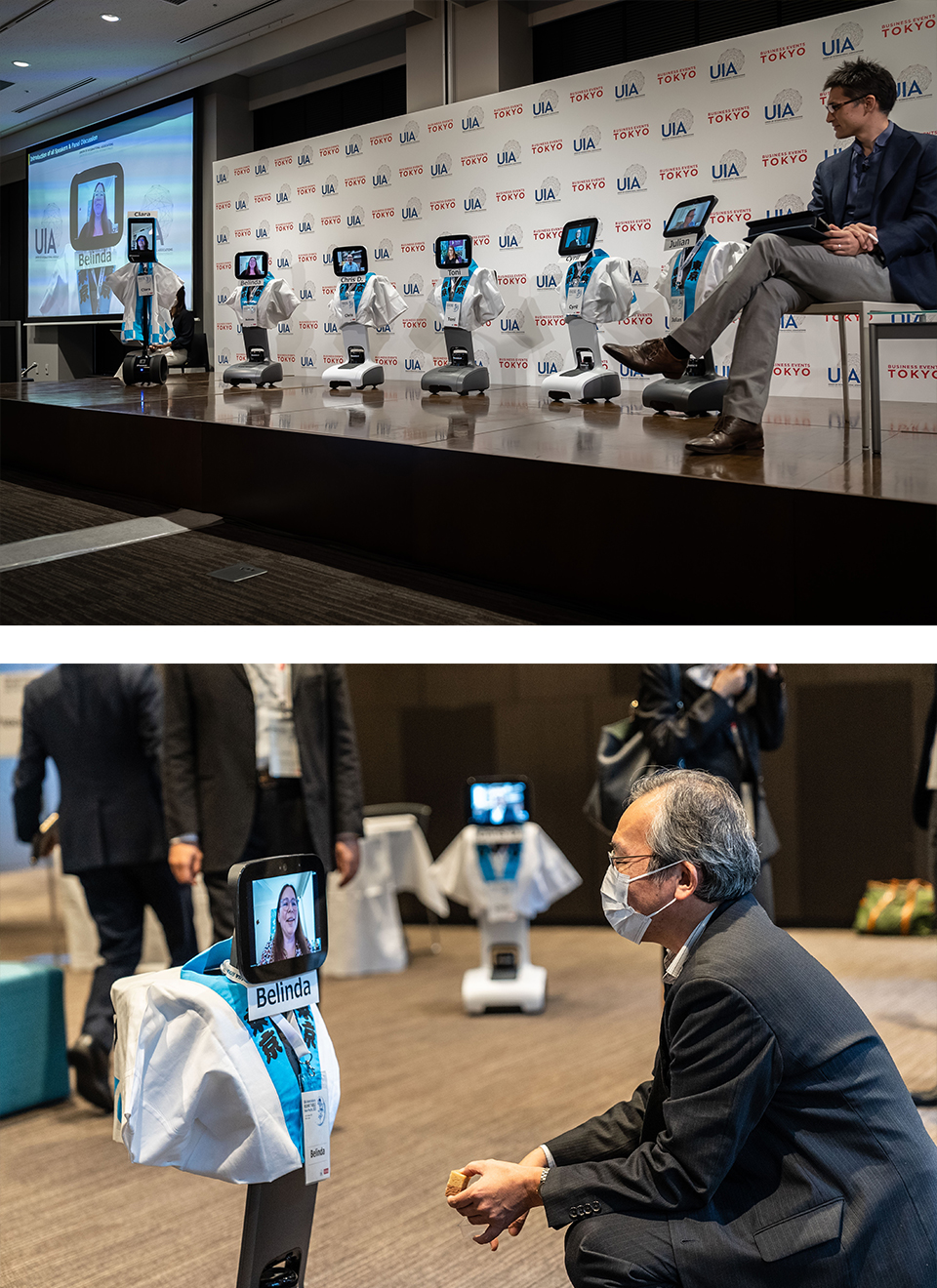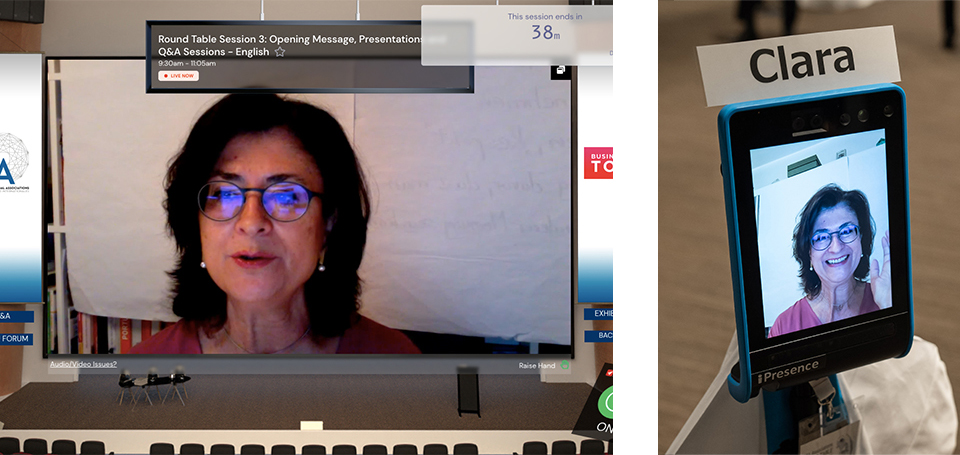Convention Case Studies
Hybrid Conference Case Study: The UIA Associations Round Table Asia-Pacific 2021 in Tokyo
The Union of International Associations (UIA) Round Table Asia-Pacific was held in a hybrid format for the first time, bringing together international delegates to Tokyo to an unprecedented showcase of a successful blend of online and in-person gatherings that could serve as an example of how future events of its kind can follow suit.
The ninth annual event in the region was led by the Tokyo Convention & Visitors Bureau (TCVB) as a local host partner for the first time and attracted 115 participants hailing from a vast range of professional organizations. It comprised lectures for delegates from various business events-related organizations, including international conference organizers, convention bureaus, DMOs, DMCs, and international PCOs. Issues related to academic association management and the latest trends in the industry were among the topics covered.
This experience equipped the Bureau with the expertise to provide valuable insight on hosting hybrid conferences and enable other Japanese convention bureaus with the necessary know-how to follow suit. This case study explores how TCVB successfully held the first UIA Round Table hybrid conference amid the Covid-19 pandemic.
Conference Overview
| Event Name | UIA Associations Round Table Asia-Pacific 2021 in Tokyo |
|---|---|
| Dates | October 21-22, 2021 |
| Location | Congres Square Nihonbashi, Tokyo and online (Hybrid Conference) |
| Attendance | 43 on-site and 72 online |
Ingenuity of approach

In the weeks leading up to the Round Table, Japan saw a dramatic decline in the number of Covid-19 infections compared to the period when the event was planned. In fact, in October, on average per day, there were less than 100 newly infected people recorded nationwide.
Nevertheless, safety and anti-infection measures remained in place throughout the two days of the on-site conference.
The conference was held in accordance with the hygiene safety guidelines established by TCVB. Infectious disease countermeasures were communicated to all in-person participants ahead of time and were carried out in the lead-up to and during the event. Standard practices employed during the conference included established physical distancing and the use of plastic sheeting on tables at receptions. Instead of providing buffet-style meals -- but still ensuring throughout satisfaction -- participants were treated to freshly made boxed lunches.
Furthermore, the TCVB adopted Panasonic’s anti-infection technology at the venue on both days. Named Anshin Gate, it checks the participant’s temperature and sanitizes their hands and feet simultaneously. Another piece of technology tracked participants’ movements in the foyer using a series of cameras to gauge the congestion levels in each part of the room and reduce the chances of lines or crowds forming. During the designated break times, in-person attendees could therefore mix safely in the foyer, networking with each other and the Round Table speakers via telepresence robots.
The online aspect of the Round Table incorporated a platform that allowed all attendees to navigate between the auditorium -- where the lectures and panel discussions were held -- and the exhibition area, where they could find out about the event's sponsors and other attendees. To allow for interactivity, three breakout rooms were initially considered after each session but, based on experiences at other hybrid conferences, a chatbox was adopted instead. Online attendees were asked to insert their questions into the chatbox, which were then fed to the speaker via a moderator. As a result, all participants could enjoy an in-depth Q&A session.

Chris Christophers, founder and CEO of Kobe-based iPresence, gave a lecture on his company’s telepresence technology and provided avatar robots for each overseas speaker at the venue so they could enjoy greater interactivity with in-person attendees. The inclusion of avatar robots successfully solved one common problem of hybrid events: online speakers are only seen on screen. Christophers described how his telepresence avatar robots and their digital twins could enhance communication between in-person and online attendees at all kinds of business and private events. The active communication between presenters who used avatar robots and listeners who interacted with them proved that the use of avatars in a hybrid-style meeting was highly entertaining and valuable for all parties involved.
Other interactive experiences also included a virtual networking lounge, four virtual content introducing tourism and cultural attractions of Tokyo (provided via video presentations on the online platform), and a virtual green tea experience on offer. This content was designed to showcase the capital and inspire online attendees to visit Japan in the future.
Thought-provoking content
Cyril Ritchie, President of the UIA and First Vice-President of CoNGO, delivered the opening keynote. Entitled “Associations in the World: Speaking Truth to Power,” it explained that associations are essentially groupings of people who have come together to promote a good cause, be it social, environmental or humanitarian. He said that associations could encourage better decision-making and generate greater public support by exerting more influence in public affairs both nationally and internationally.
Positive feedback

JNTO interviewed a number of in-person attendees during the two-day event to assess their thoughts on their experiences. The majority of those questioned had participated in a hybrid event for the first time.
Conference suppliers praised the event for incorporating various elements, saying that although it was “unfortunate that overseas participants could not join in person, it was good that we could communicate with people remotely through the use of advanced technology such as avatar robots.” A potential future organizer said he was “interested in attending the conference to collect practical information on hybrid conferences that would give [them] hints” in preparation for an international congress they are planning to host in 2023.
Convention bureau representatives were also pleased, saying “the event helped [them] understand how hybrid international conferences are held.” They commented that they would “leave Tokyo and return to [their] respective regions of Japan, inspired to offer similar events themselves.”
The feedback was positive from the organizers’ perspective, too. In an interview with TCVB, Clara Fernández López, UIA’s External Relations Manager, called the event a “big success,” explicitly praising having avatar robots for each speaker on stage.
“It was my first hybrid event, and it has been a great experience,” Fernández López said in an interview after the conference. “It has been of value for the association delegates since they heard a lot about challenges, topics, and issues which are of great importance to their daily work.” She added that hosting the event had many challenges but praised TCVB for the successful and well-executed organization.
“We would never have engaged in this adventure without the support of the Tokyo Convention & Visitors Bureau. It has been continuous planning and organization together. There were technical challenges, for me and for the speakers too, but we worked through them with everyone’s professionalism.”
The importance of real networking

When asked how she perceives hybrid conferences compared to in-person events, she answered that “it’s a big difference, even if we had the avatar robots on stage.”
“[In a hybrid-style] You can listen to the presentations, and you can ask questions, but we cannot feel the emotions. I think that is the biggest difference. When we are on-site, we can feel each other, have lunch and drink together, and enjoy networking. And you meet people by chance, not by appointment, so I think that's what I miss the most,” she added.
“I also wish I had the opportunity to see the city of Tokyo. Experiencing the culture and meeting with the people must have been a great experience.”
Yet, while acknowledging the clear benefits of in-person meetings, Fernández López said that the conference was executed excellently and she felt fully satisfied from the perspective of content and information. “I don’t think I’ve missed any type of information,” she said.
Post-Conference Remarks from TCVB:
An Important Milestone for a More Experienced City
“Due to the hybrid style of the conference, we were conscious of preparing programs and content that would provide added value and appeal to both on-site and online participants even more than if the conference was held in person.”
“One of the most significant benefits of hosting a hybrid conference as a local host, especially under the current Covid-19 circumstances, was that we could fully grasp the challenges that conference organizers face from the early stages of preparation to the actual event date. We hope that through this valuable experience, we could demonstrate that Tokyo is an attractive, safe, and secure destination for international conferences.”
There is no doubt that hybrid-style meetings will be commonly adopted in the next couple of years. As there is a demand for both in-person and online operations, the requirements are diverse, and convention bureaus are expected to accumulate know-how on hybrid meetings. By hosting the UIA Associations Round Table Asia-Pacific this time, Tokyo, as one of the leading cities in Japan, was able to gain further experience and demonstrate its high level of management capabilities to all conference attendees and related parties.

